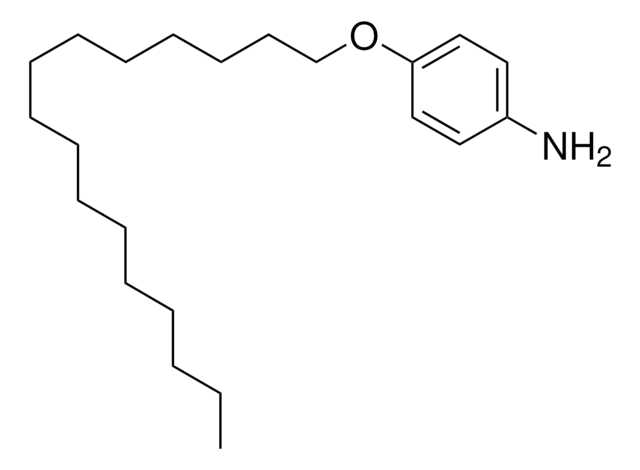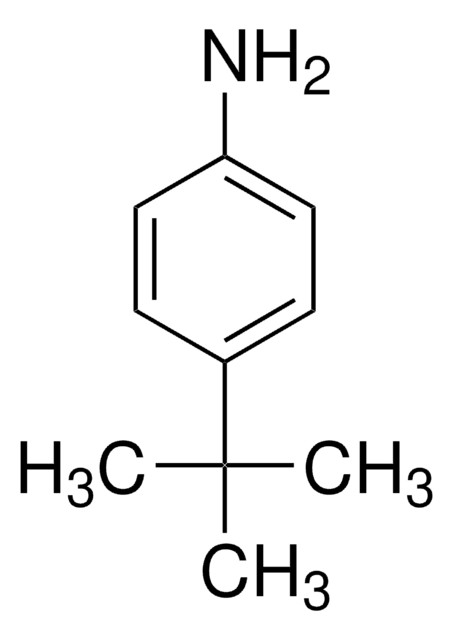233560
4-Hexadecylaniline
97%
About This Item
Produits recommandés
Pureté
97%
Point d'ébullition
254-255 °C/15 mmHg (lit.)
Pf
53-56 °C (lit.)
Chaîne SMILES
CCCCCCCCCCCCCCCCc1ccc(N)cc1
InChI
1S/C22H39N/c1-2-3-4-5-6-7-8-9-10-11-12-13-14-15-16-21-17-19-22(23)20-18-21/h17-20H,2-16,23H2,1H3
Clé InChI
RBCCQATUVPNPGQ-UHFFFAOYSA-N
Catégories apparentées
Application
- in simple solution based method for the gold (Au) metallization of DNA resulting in a Au nanowire network
- in fabrication of hybrid organized molecular films by Langmuir-Blodgett (LB) technique and their photoluminescent properties has been investigated
- in seed mediated synthesis of anisotropic rod shaped gold nanoparticles in organic media
Mention d'avertissement
Warning
Mentions de danger
Conseils de prudence
Classification des risques
Eye Irrit. 2 - Skin Irrit. 2 - STOT SE 3
Organes cibles
Respiratory system
Code de la classe de stockage
11 - Combustible Solids
Classe de danger pour l'eau (WGK)
WGK 3
Point d'éclair (°F)
235.4 °F - closed cup
Point d'éclair (°C)
113 °C - closed cup
Équipement de protection individuelle
dust mask type N95 (US), Eyeshields, Gloves
Certificats d'analyse (COA)
Recherchez un Certificats d'analyse (COA) en saisissant le numéro de lot du produit. Les numéros de lot figurent sur l'étiquette du produit après les mots "Lot" ou "Batch".
Déjà en possession de ce produit ?
Retrouvez la documentation relative aux produits que vous avez récemment achetés dans la Bibliothèque de documents.
Notre équipe de scientifiques dispose d'une expérience dans tous les secteurs de la recherche, notamment en sciences de la vie, science des matériaux, synthèse chimique, chromatographie, analyse et dans de nombreux autres domaines..
Contacter notre Service technique









